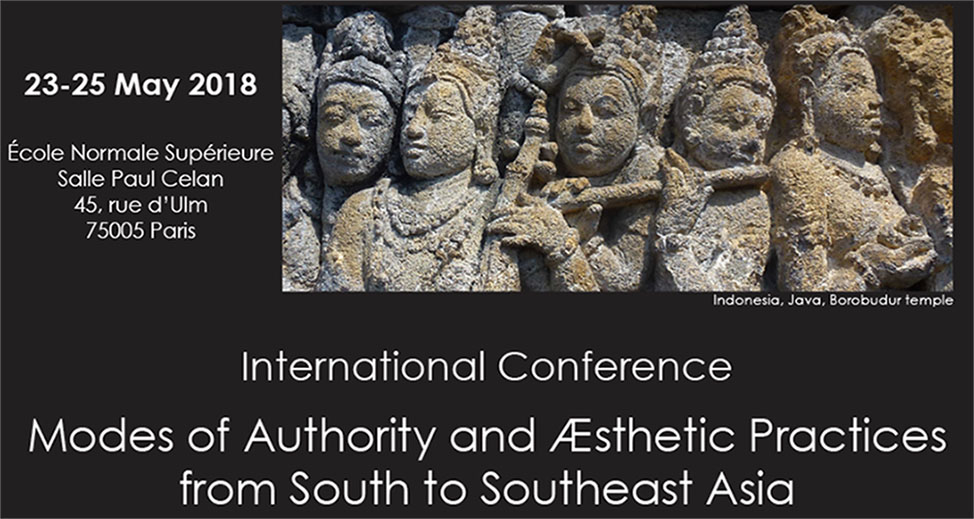
|
|
|
Call for PapersDeadline: Please submit a 300-word abstract and a short biographical note by September 30th 2017. In its material and immaterial manifestations, art is often associated with different forms of authority. Sometimes confused with the notion of power, authority can be distinguished from it as the capacity of agents to act on the social body through means other than coercion (Arendt 1972 [1958]). Beyond the different forms of domination proper to political power, authority thus appears as the foundation of the symbolic institution of the social. The different legitimation strategies on which authority is based (Weber 1914, 1916) imply representational systems that vary depending on the society. These are made operative through an array of means, which are social, religious, political and economic, but also ethical and aesthetic. The aesthetic dimension plays a particularly important role in the dynamics of authority construction from South Asia to peninsular and insular Southeast Asia, two large regional areas that were already connected before the Common Era through commercial, political and cultural exchange networks. The various contexts thus gave rise to an array of regional dynamics, which in turn need to be studied as much in their particularity as in their link to circulated models. We consider aesthetic forms —whether graphic, plastic, musical, choreographic, iconic, theatrical, or narrative (or a combination of these) — as “practices” rather than “art works”. Refuting the ethnocentrism of thinking in terms of “object”, Jean-Marie Schaeffer (2004) suggests we give up this category in favor of the idea of the aesthetic dimension as a relationship to the world. This analytical perspective sheds light on the representational modes operative in South and Southeast Asian societies. The relationships that these representations maintain are to be thought of as processes, transformations, interdependencies and interactions rather than as objects. Thus, the conference proposes an analysis of aesthetic phenomena that is not centered on a notion of the object, but rather on that of the “aesthetic relationship”, thereby insisting just as much on shaping processes as on the operational mode of these aesthetic practices. In addition, this approach aims to account for the way in which the societies stage themselves in order to project a certain image of the self. Furthermore, we will examine how, over time, aesthetic practices have been valorized, re-appropriated, circulated and re-invented, but have also undergone censure or produced resistances that have fed into challenges to established powers. Through the dances as well as orchestras welcomed in palace courts, singing groups affiliated with temples, the statuary of the great Hindu-Buddhist monuments, origin narratives, and the wood engravings of Austronesian societies, we will ask ourselves how the deployment of aesthetic practices contributes to the shaping of authority. The aim is to examine the way in which visual, sonic, and poetic forms contribute to the exercise of authority by giving it a sensory form, and through what aesthetic means societies manifest relationships to authority. What checks are they subject to, and what are their modes of resilience in the face of change? To what extent can they sidestep the political programs in which they are developed so as to become vectors of opposition? This conference intends to think comparatively about the relationship between aesthetic phenomena and authority in a region that ranges from stateless societies to kingdoms and sultanates, via various types of State models. The participants will present the historical and social background of the examined fieldwork locations and, if relevant, the cosmologies and operative classification systems, in order to contextualize the practices studied. The description of specialists of the forms as well as the study of the forms themselves will enable us to address the mechanisms through which authority is shaped. Finally, the processes of transmission, perpetuation, disappearance, and resilience of practices will serve as leads for reflection on the modes of legitimation of authority and the power struggles they initiate. These relationships can translate into reification of heritage, recuperation for nationalist or nativist discourses, resistances and challenges to established powers — all of which will then be analyzed in accordance with the dynamics proper to each studied case. This meeting will gather together researchers from several social science fields (history, art history, literature, archaeology, epigraphy, ethnomusicology, ethnochoreology, social anthropology) and several cultural areas, inviting a dialogue between scholars of South and Southeast Asia.
REFERENCES Arendt, Hannah, 1972 [1st edition in English: 1968], La crise de la culture, Paris, Folio. Schaeffer, Jean-Marie, 2004, « Objets esthétiques ? », L’homme, vol.170: 25-46. Weber, Max, 2014 (1914). La Domination, translation by Isabelle Kalinowski, Paris: La Découverte. Weber, Max, 2003 (1916). Hindouisme et Bouddhisme, translation by Isabelle Kalinowski and Roland Lardinois, Paris: Flammarion. |

